Welcome to Chongqing, a city where GPS systems weep, where skyscrapers sprout from cliff faces, and where the aroma of Sichuan peppercorns lingers in the mist. This is China’s “Mountain City” – a 3D labyrinth where rivers carve through limestone canyons, cable cars glide between skyscrapers, and the past coexists with the future in a chaotic symphony of sights, sounds, and flavors. Buckle up as we embark on a journey through this vertical wonderland, with a special focus on its must-visit attractions that will leave your senses reeling.
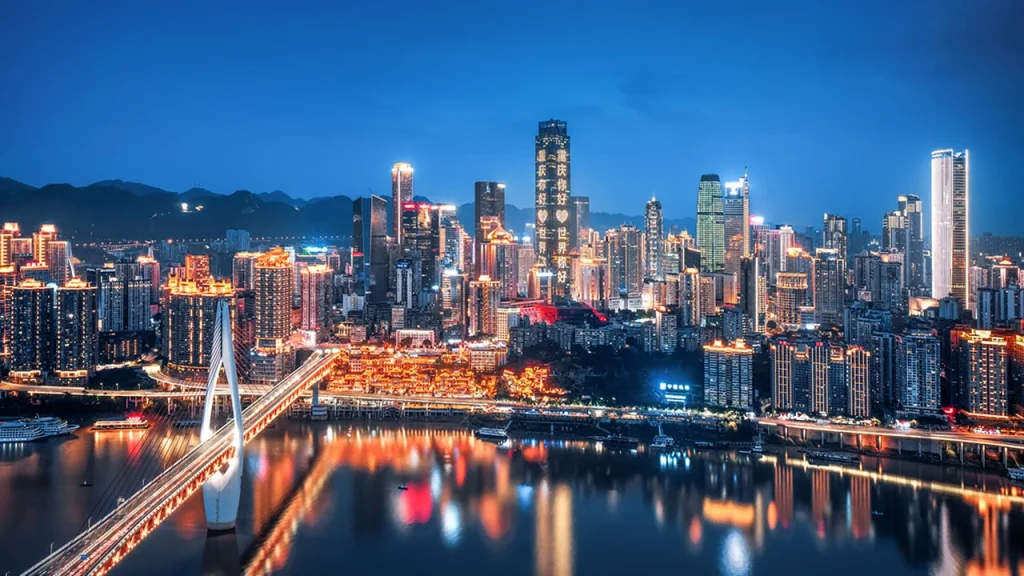
Chapter 1: City Profile – The Heartbeat of Southwest China
Nicknames & Vibe:
Chongqing wears many hats: “Fog City” (for its 104 annual foggy days), “Bridge Capital” (with over 14,000 bridges), and “8D Magic City” (a term coined for its mind-bending topography). Unlike flat cities like Beijing or Shanghai, Chongqing thrives on verticality – a quality that earned it starring roles in Transformers: Age of Extinction and Crazy Rich Asians.
Demographics & Economy:
Home to 32 million people across its sprawling metropolitan area, Chongqing is China’s most populous municipality. Its economy roars with automotive manufacturing, tech innovation (think: Alibaba’s smart city initiatives), and a culinary empire that exports hotpot franchises globally.
Modern Marvels:
The city’s skyline is a futurist’s dream. The Raffles City Chongqing complex features eight skyscrapers connected by a skybridge shaped like a sailing ship, while the incoming Chongqing Landmark Tower promises to pierce the clouds at 470 meters.
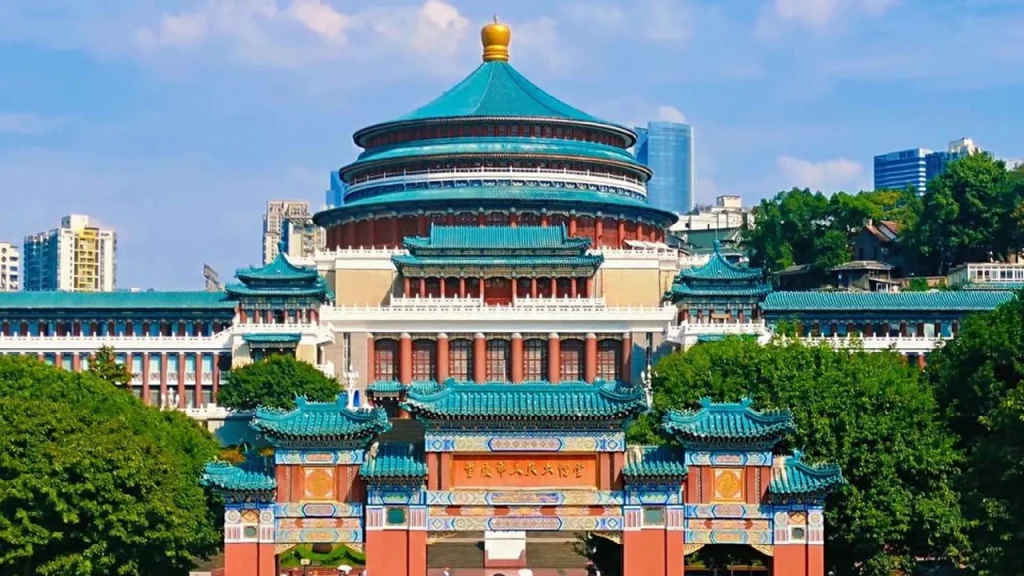
Chapter 2: Historical Tapestry – From Ancient Battlegrounds to Wartime Refuge
Ba Culture Roots (11th Century BCE):
Long before modernity, the Ba people forged bronze weapons and worshipped tigers here. Traces of their warrior spirit linger in the city’s fiery cuisine and no-nonsense attitude.
Antiquity to Empire:
Chongqing became a strategic stronghold during the Han Dynasty (206 BCE–220 CE). Its name literally means “Double Celebrations” – a nod to its founding during Emperor Guangxu’s double coronation in 1189.
Wartime Capital (1937–1945):
When Japanese forces advanced during WWII, Chongqing became China’s wartime capital. The city endured relentless bombing but never surrendered, earning the nickname “Heroic City.” Explore the moving exhibits at the Chongqing China War Museum or the underground command bunker in E’ling Park.
Postwar Rebirth:
In the early days of the People’s Republic of China, Chongqing served as the seat of the Southwest Administrative Region and a centrally administered municipality. Today Chongqing is a municipality directly under the central government and a mega city of the People’s Republic of China, a national central city, an important central city in China approved by the State Council, a national historical and cultural city, and an international comprehensive transportation hub city. It is a national advanced manufacturing base, a western science and technology innovation center, a gateway to the outside world, and a shipping center in the upper reaches of the Yangtze River. Western financial center, international consumption center city.
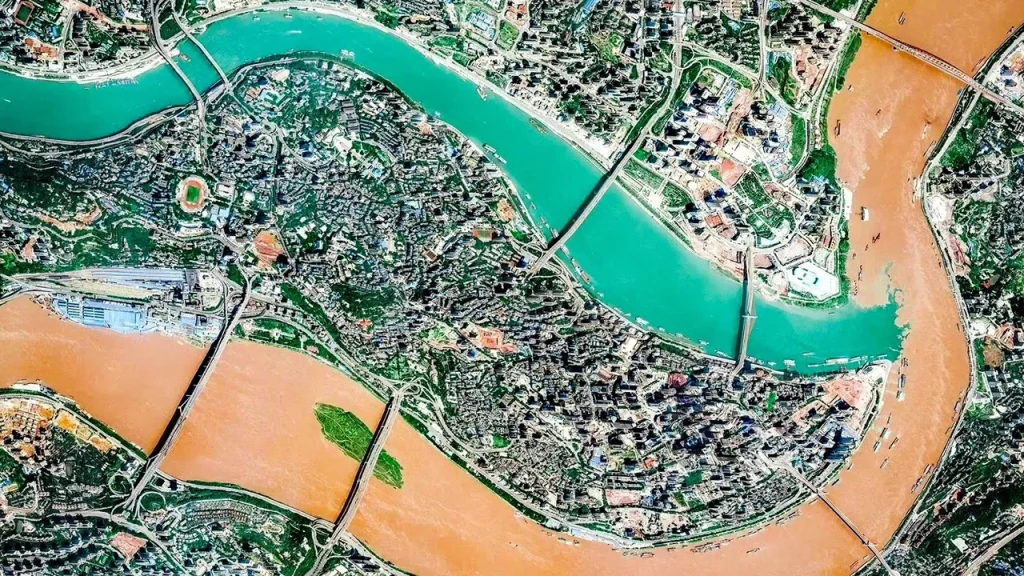
Chapter 3: Administrative Puzzle – Decoding Chongqing’s Sprawl
Core Zones:
Yuzhong District: The original city center, home to iconic landmarks like Jiefangbei (Liberation Monument) and Hongya Cave.
Jiangbei District: Modern CBD with glass towers and the Chongqing Grand Theatre shaped like a spaceship.
Satellite Cities:
Wanzhou: A historic trading hub 230km east, known for its Tang Dynasty-era poetry trails.
Fuling: Famed for its zhacai (pickled mustard stems) and the 816 Nuclear Military Plant, a Cold War-era relic now open to tourists.
Counties & Autonomous Regions:
Shizhu County: Gateway to the minority Tujia and Miao cultures, with traditional stilt houses and fire festivals.
Youyang County: Home to the UNESCO-listed Taohuayuan (“Peach Blossom Spring”) – a surreal landscape of karst peaks and misty valleys.
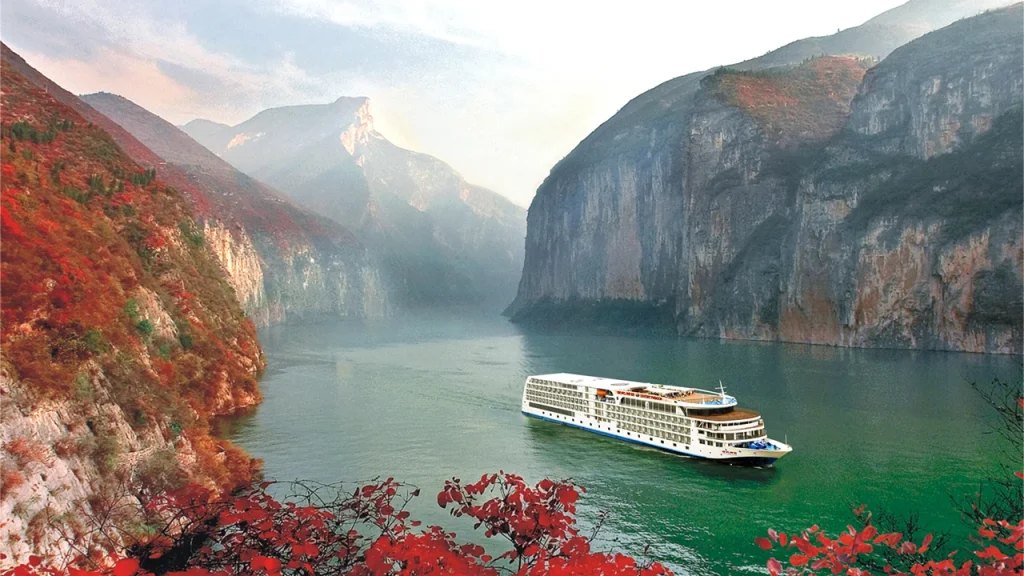
Chapter 4: Geography – Nature’s Architect
Topography:
Chongqing sits at the confluence of the Yangtze and Jialing Rivers, where parallel mountain ranges create a natural fortress. Elevations swing from 70 meters (river level) to 1,800 meters (Jinfo Mountain peaks).
Key Geological Features:
Three Gorges Region: The Qutang, Wu, and Xiling Gorges begin just downstream, offering dramatic boat tours through dragon-backed mountains.
Karst Wonderland: Over 10,000 limestone caves honeycomb the area, including the otherworldly Fengdu Ghost City – a Taoist “underworld” carved into cliffs.
Urban Design Quirks:
Wave-Shaped Roads: Drivers navigate switchbacks like the Hongyadong Expressway, which spirals 10 stories above ground.
Rooftop Highways: The Huangguan Elevated Bridge slices through the 24th floor of a residential building – a scene straight out of Inception.
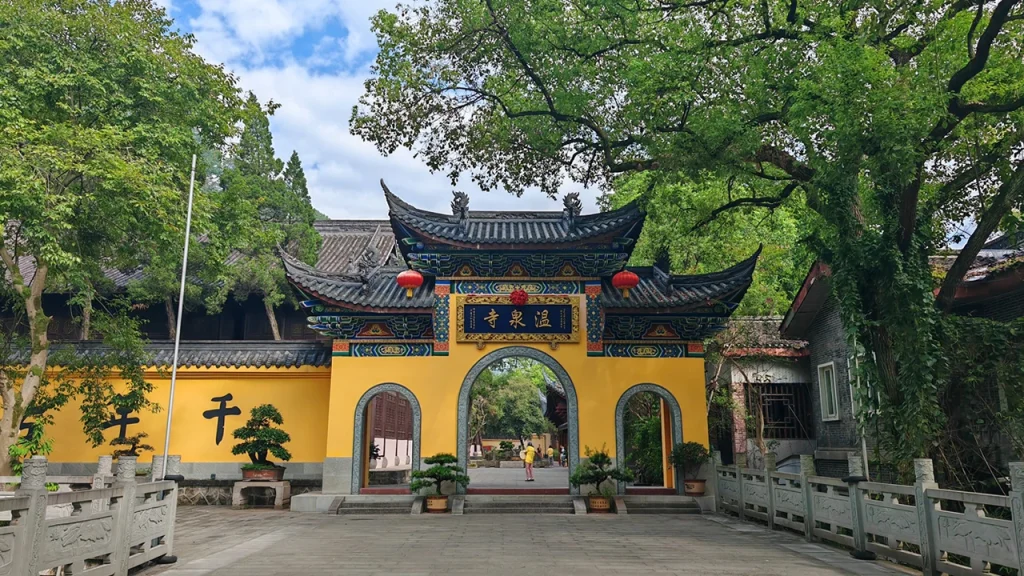
Chapter 5: Climate – Four Seasons in a Steamy Cauldron
Summer (Jun–Aug):
The “Furnace City” lives up to its name with 40°C+ heat. Survival tips: Seek refuge in the underground city (a 4 million sqm network of shops, museums, and subways), or join locals in “hotpot therapy” – the belief that sweating out toxins in a spicy broth cures all ills.
Autumn (Sep–Nov):
Mild temperatures (15–28°C) and golden ginkgo leaves make this the prime travel season. Attend the Chongqing International Beer Festival or hike through the maple forests of Jiangjin District.
Winter (Dec–Feb):
Chilly (8–12°C) and damp, but rare snowfalls turn the city into a winter wonderland. Soak in hot springs like Beibei’s Hot Springs Temple, where mineral pools nestle among bamboo groves.
Spring (Mar–May):
Cherry blossoms and peonies explode across parks, but beware “plum rains” – weeks of drizzle that make the city’s 4,000+ bridges gleam like silver threads.
Chapter 6: The Main Event – 15 Must-Visit Attractions That Define Chongqing
Hongya Cave (洪崖洞)
The Gateway to a Bygone Era
Perched 11 stories above the Jialing River, this recreated traditional village dangles like a wooden jewel box. By day, explore tea houses and souvenir shops selling Tujia embroidery. At night, the lantern-lit façade transforms into a scene from Spirited Away.
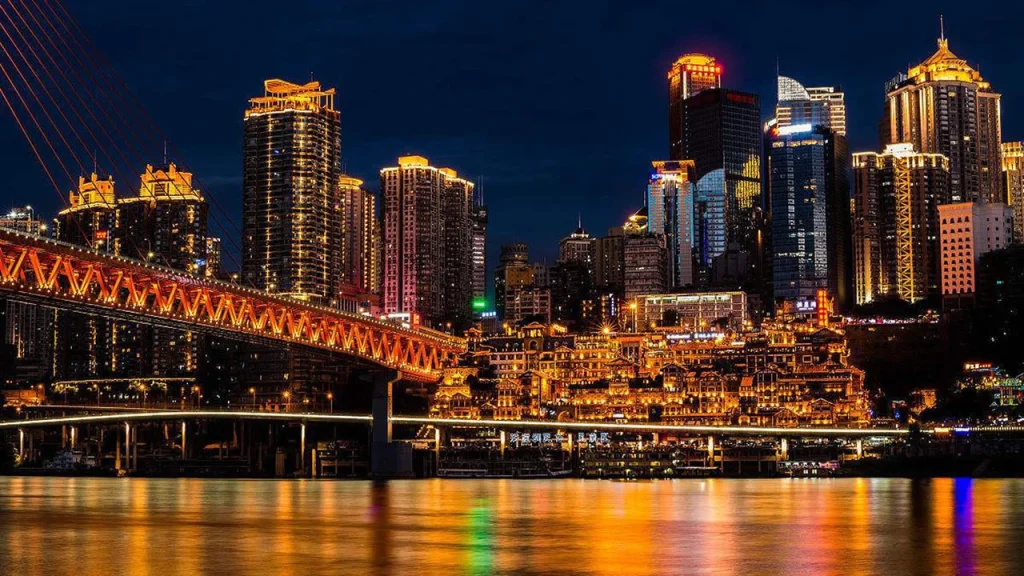
Pro Tip: For the ultimate photo, cross the Qiansimen Bridge and shoot back toward the cave with the floodlit skyline as your backdrop.
Ciqikou Ancient Town (磁器口)
Where Time Stands Still
A 1,000-year-old porcelain-trading port turned artisan enclave. Watch masters hand-pull noodles, paint fans, and craft suanla fen (spicy rice noodles). Don’t miss the Three Monks Tea House, where monks perform Zen tea ceremonies.
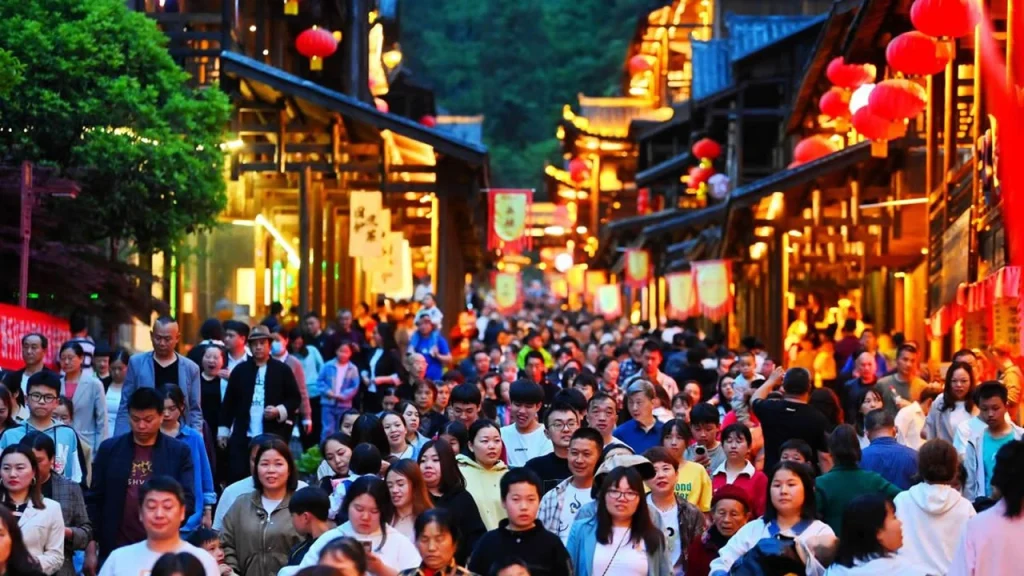
Hidden Gem: The Ba Yu Ancient Ship Museum displays a Ming Dynasty warship excavated from the riverbed.
Wulong Karst National Geology Park (武隆喀斯特)
Nature’s Sculpture Garden
A UNESCO site 130km from downtown, this is Earth’s answer to Avatar’s Pandora.
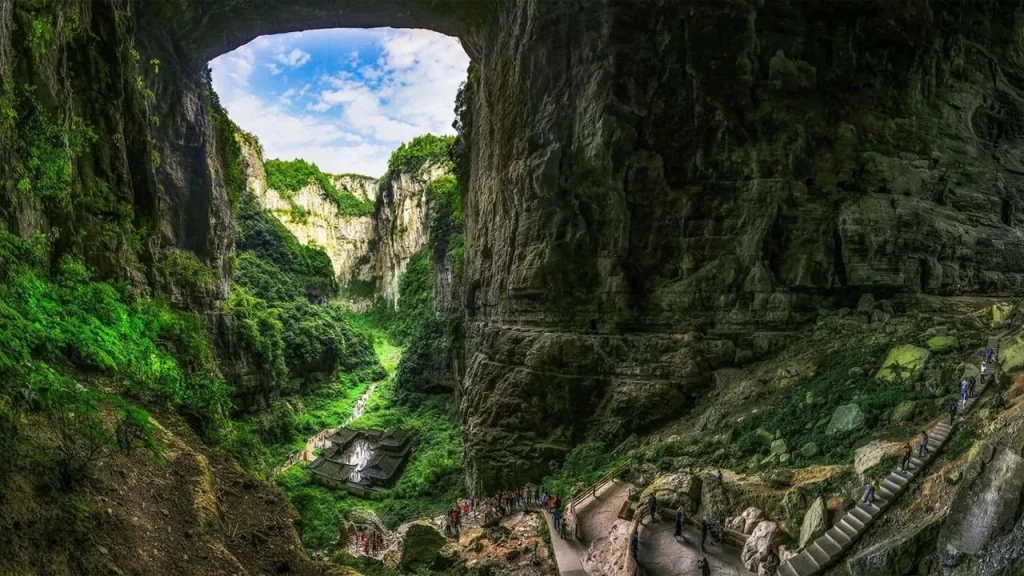
Three Natural Bridges: Hike beneath the 200m-tall Tianlong Bridge, where Transformers 4 filmed its climax.
Furong Cave: A subterranean cathedral with 1,200-year-old stalactites and a “corridor of love” where couples etch their names.
Impression Wulong Show: Zhang Yimou’s outdoor spectacle features 300 performers dancing across water stages.
Logistics: Take a 2.5-hour bus from Chongqing North Station. Combine with a stay at the Fairy Mountain Ski Resort (Dec–Feb) for Alpine vibes.
Dazu Rock Carvings (大足石刻)
Stone Scriptures of Compassion
These Tang-to-Song Dynasty Buddhist carvings (1.5 hours west of Chongqing) rival Dunhuang’s Mogao Caves. The Baodingshan Grottoes house the Thousand-Hand Guanyin – a 15m-tall deity with 1,000 arms, each holding a unique artifact.
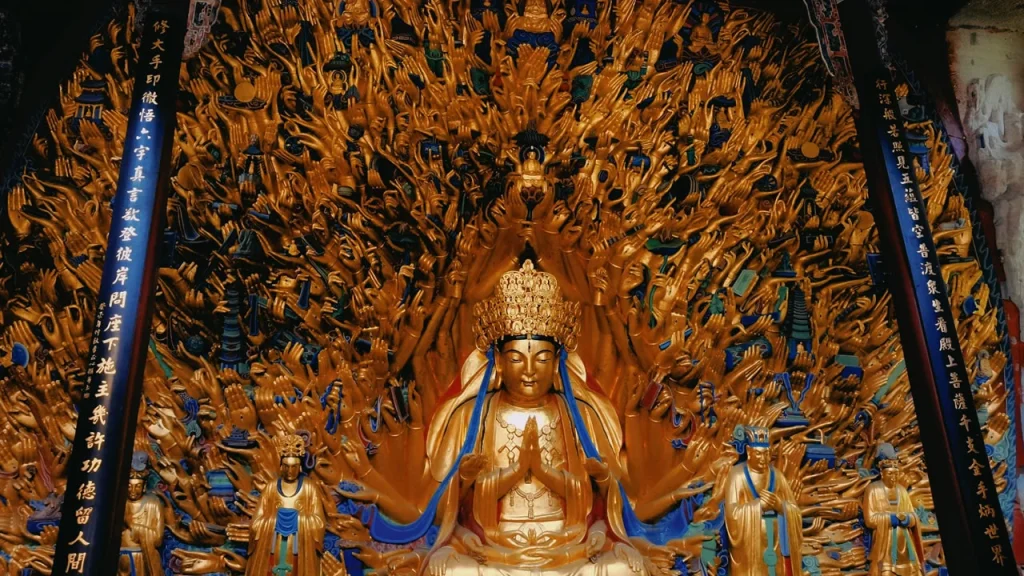
Why It’s Special: Unlike other carvings, these were sponsored by commoners, not royalty, making them a grassroots chronicle of medieval life.
Yangtze River Cable Car (长江索道)
The “Flying Bus” Across Time
This 1,166m-long cable car has shuttled locals since 1987. Board at Xinhua Road Station for a 4-minute journey over rooftops and rivers, with views of the Chaotianmen Dock – where cargo ships and luxury cruise liners collide.

Insider Hack: Visit at sunrise to avoid crowds and capture the “golden hour” glow on the Jialing River.
E’ling Park (鹅岭公园)
The Best View in the City
This hilltop park offers a panoramic vista that stretches from the Yangtze River to the futuristic Yuzhong skyline. For a romantic twist, visit at night when the Two Rivers Tower lights up like a lantern.
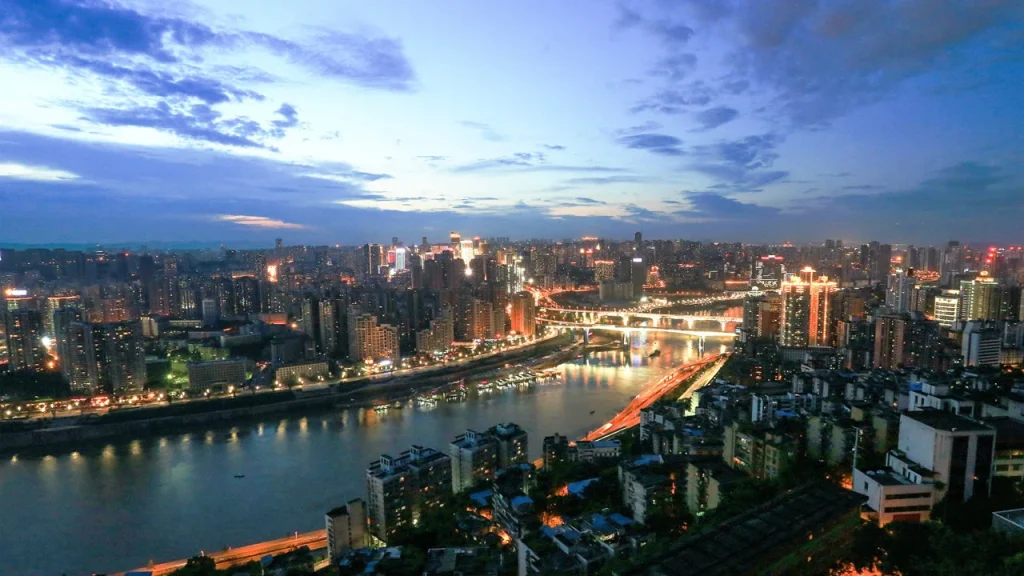
Bonus: The park’s Fly Away Observation Deck was a secret wartime air-raid shelter.
Huangguan Escalator (皇冠大扶梯)
The World’s Deepest Subway Station
At 112m long and 30 degrees steep, this escalator is a thrill ride disguised as public transit. The 2.5-minute descent connects Lianglukou Station to Two Rivers Station – and costs just 2 RMB ($0.30).
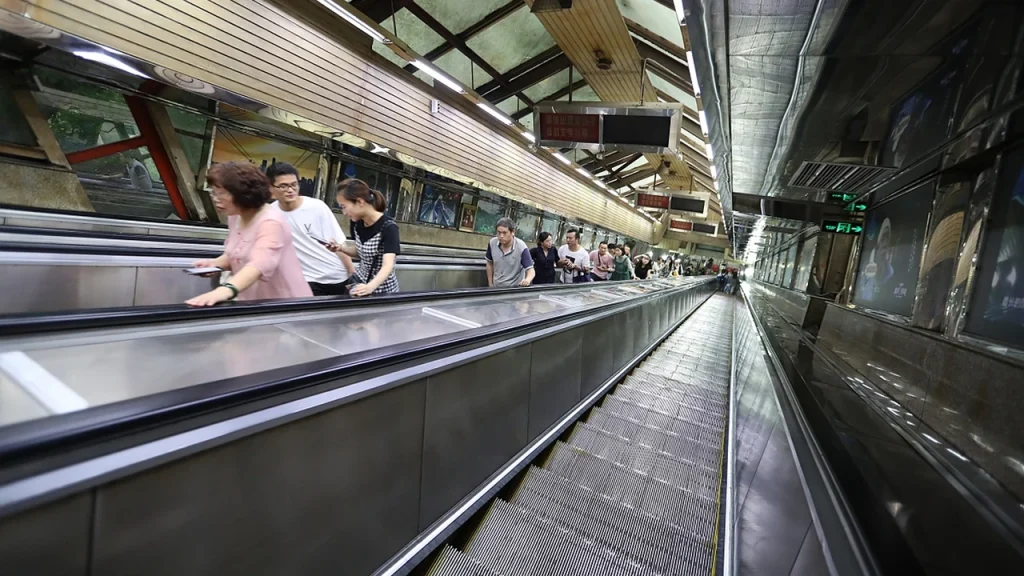
Pro Tip: Stand on the right if you want to walk; locals use the left side as a treadmill.
Zhongshan Four Road (中山四路)
A Stroll Through Republican-Era China
This 1km-long boulevard is a living museum of 1930s architecture. Highlights include:

Zhou Enlai’s Former Residence: Where the Chinese premier plotted wartime strategies.
Osmanthus Garden: originally the residence of Zhang Zhizhong, a former Generalissimo of the Kuomintang, derives its name from the two osmanthus trees growing in its courtyard. In August 1945, during the Chongqing Negotiations, Zhang Zhizhong designated this compound as the office and reception venue for Mao Zedong within the city. The site holds historical significance as the location where Mao Zedong and Zhou Enlai, representing the Communist Party of China, conducted negotiations with Kuomintang representatives and signed the Summary of Talks Between Representatives of the CPC and the Kuomintang—commonly known as the October 10th Agreement.
Best Time: Visit in December when the ginkgo trees turn the street golden.
Fengdu Ghost City (丰都鬼城)
The Underworld on Earth
Perched on Ming Mountain, this Taoist “ghost city” depicts the afterlife through 100+ statues of demons, judges, and sinners. Walk the 奈何桥 (Naihe Bridge) – the “Bridge of Helplessness” – where souls face their fate.
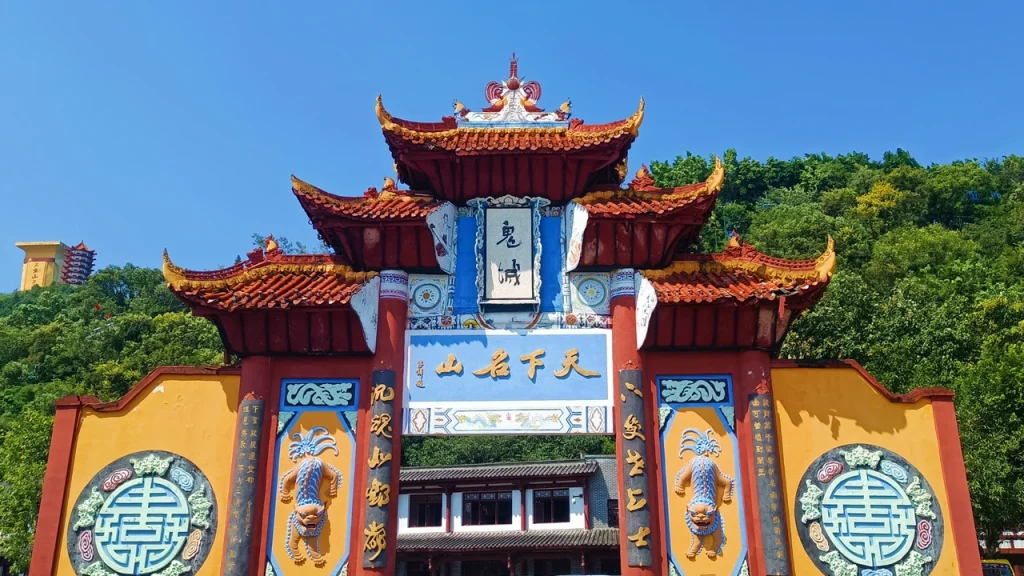
Cultural Note: During the Qingming Festival, locals burn paper offerings to appease ancestors, creating an eerie midnight spectacle.
Changshou Lake (长寿湖)
The Island-Studded Oasis*
A 1.5-hour drive from Chongqing, this reservoir boasts 800+ islands. Rent a paddleboat to explore the Baihe Island, where peach blossoms bloom in March, or hike the Shoudao Mountain Trail for views of the lake’s emerald waters.
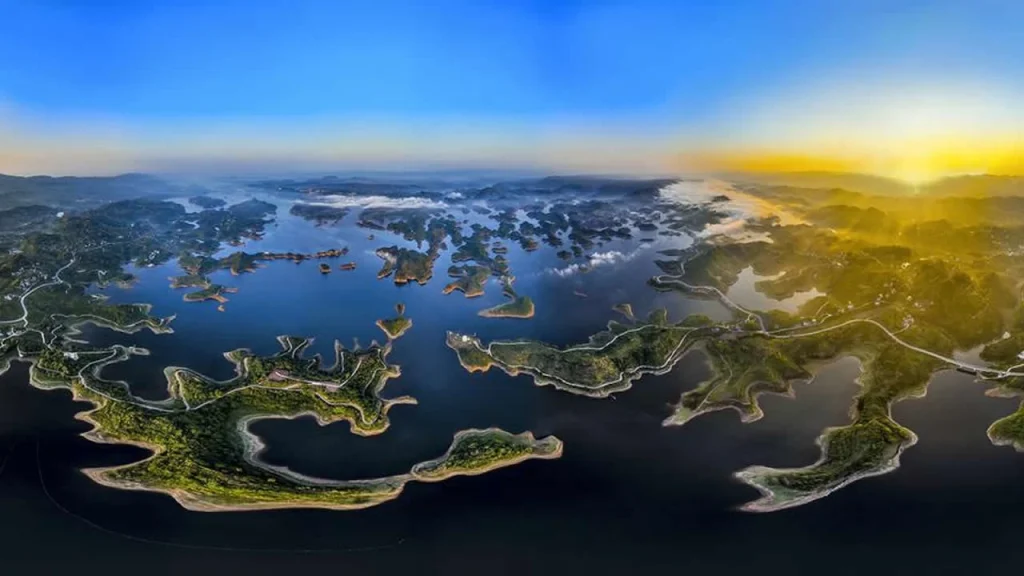
Foodie Alert: The lakeside Changshou Fish Village serves whole carp cooked in chili oil – a local delicacy.
Jinfo Mountain (金佛山)
The Alps of the East
This 2,238m-tall peak (2 hours south of Chongqing) is a four-season playground:

Spring/Summer: Hike through azalea meadows or camp at Jinfoshan Glamping.
Autumn: Witness the “Golden Buddha” phenomenon – sunlight reflecting off ancient Buddhas carved into cliffs.
Winter: Ski down powder slopes or soak in the Tianxing Hot Springs.
Eco-Adventure: Ride the Jinfo Mountain Monorail through a bamboo forest canopy.
Changjiang Sancha Cruise (长江三峡)
The Ultimate River Journey
A 4-day cruise from Chongqing to Yichang (or vice versa) through the Three Gorges. Highlights include:
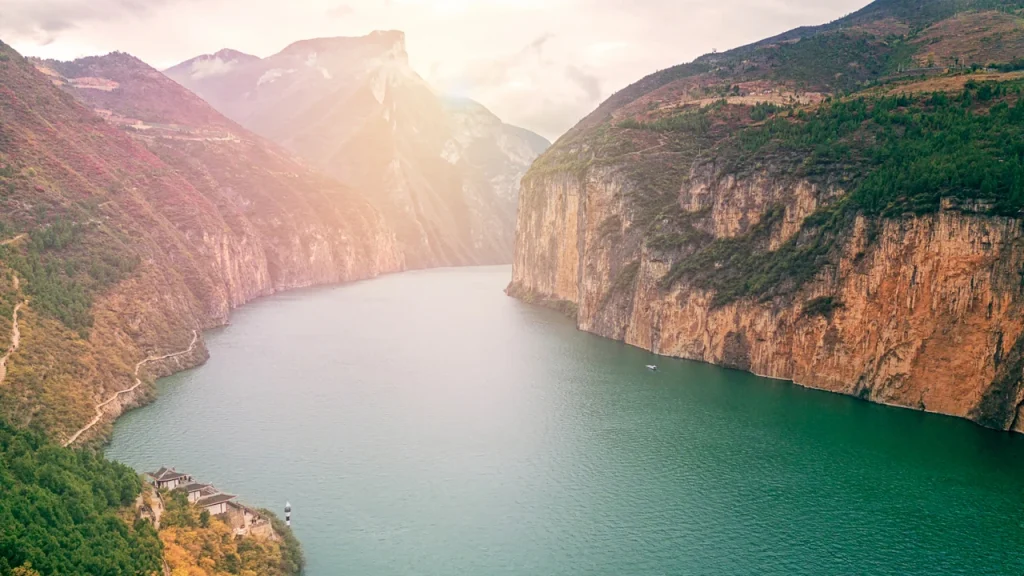
Shennv Stream: Board a wooden peapod boat to explore Tujia villages.
White Emperor City: Learn the legend of Zhao Yun rescuing Liu Bei’s son.
Three Gorges Dam: The world’s largest hydroelectric project – a feat of engineering that relocation of 1.3 million people.
Luxury Option: The Century Legend cruise ship offers butler service and a Michelin-starred chef.
Raffles City Chongqing (来福士广场)
The Sailing Skyscrapers
This $3.8 billion complex features eight towers connected by a 300m-long skybridge. Visit the Chongqing Exploration Observatory on the 73rd floor for a bird’s-eye view through a glass floor suspended 250m above ground.
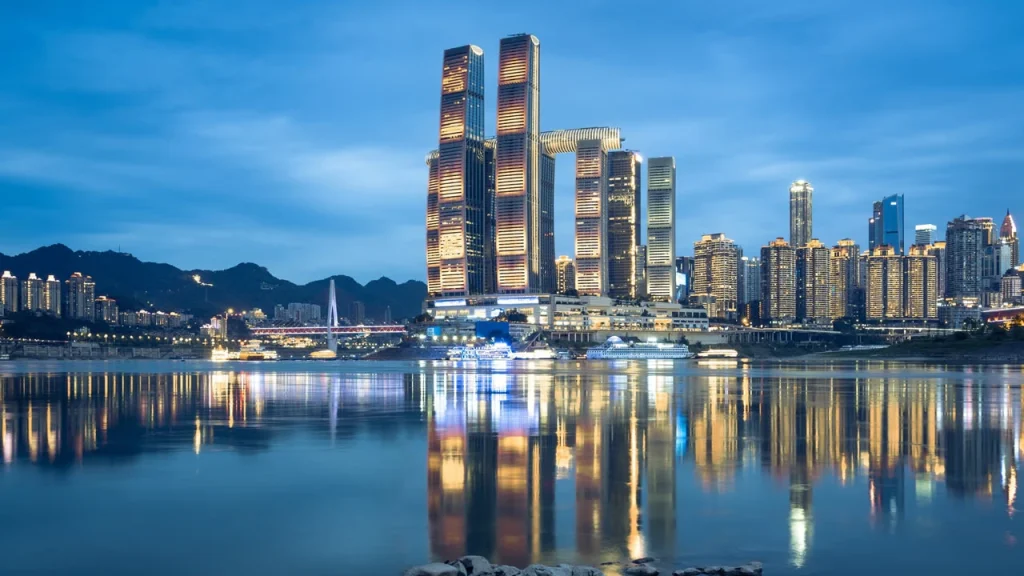
Dining: The Sky View Restaurant on the 74th floor serves Sichuan-style wagyu beef with a side of vertigo.
Huangjue Ancient Town (黄桷垭古镇)
The Artist’s Enclave
A 1-hour drive from downtown, this cobblestone village is favored by painters and poets. Highlights include:
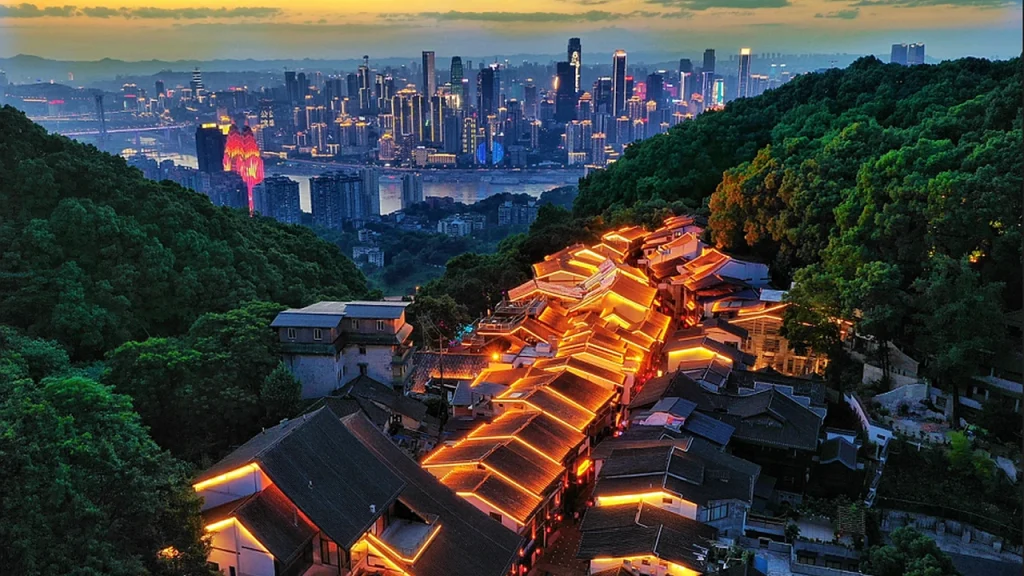
Sanmao’s Former Residence: The late Taiwanese writer’s hilltop studio, now a museum.
Tea Horse Road Museum: Learn about the ancient trade route that linked Sichuan to Tibet.
Artsy Vibe: Buy watercolor paintings from street artists or join a pottery workshop.
Chongqing Zoo (重庆动物园)
Panda Mania Central
Home to 19 giant pandas, this zoo lets you watch the furry ambassadors munch bamboo from 10 meters away. Arrive early to avoid crowds and catch the red pandas during feeding time.
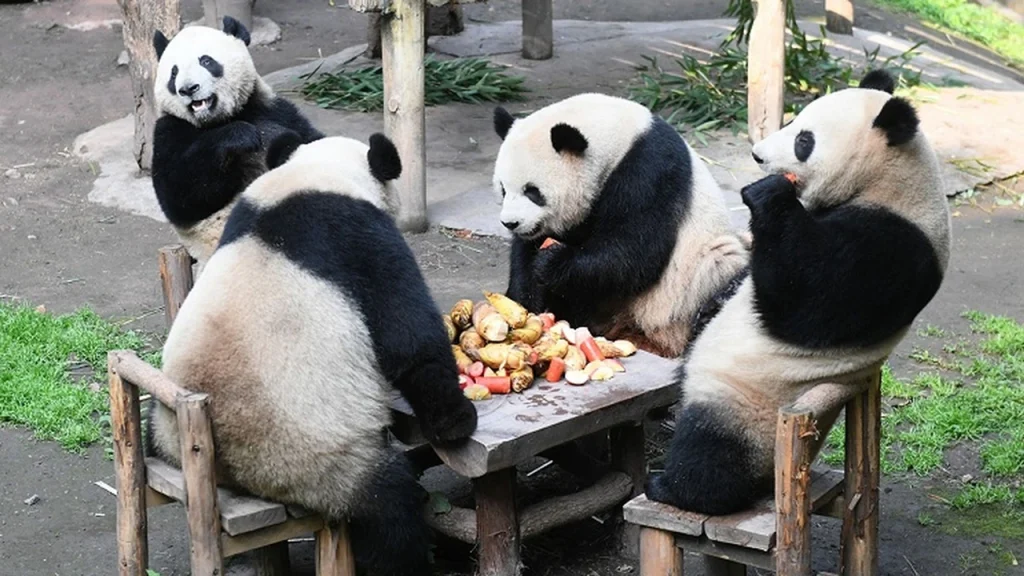
Conservation Fact: Chongqing’s pandas are part of a breeding program that’s reintroduced 300+ cubs to the wild.
Chapter 7: Travel Essentials – Surviving (and Thriving) in Chongqing
Getting Around:
Metro: The 10-line system is clean, efficient, and hilariously deep (Lines 1 and 3 descend 60m underground).
Yangtze River Ferries: Catch the Huangpu Night Cruise for views of the floodlit skyline.
Taxi Apps: Use Didi Chuxing (China’s Uber) – drivers rarely speak English, but the app translates.
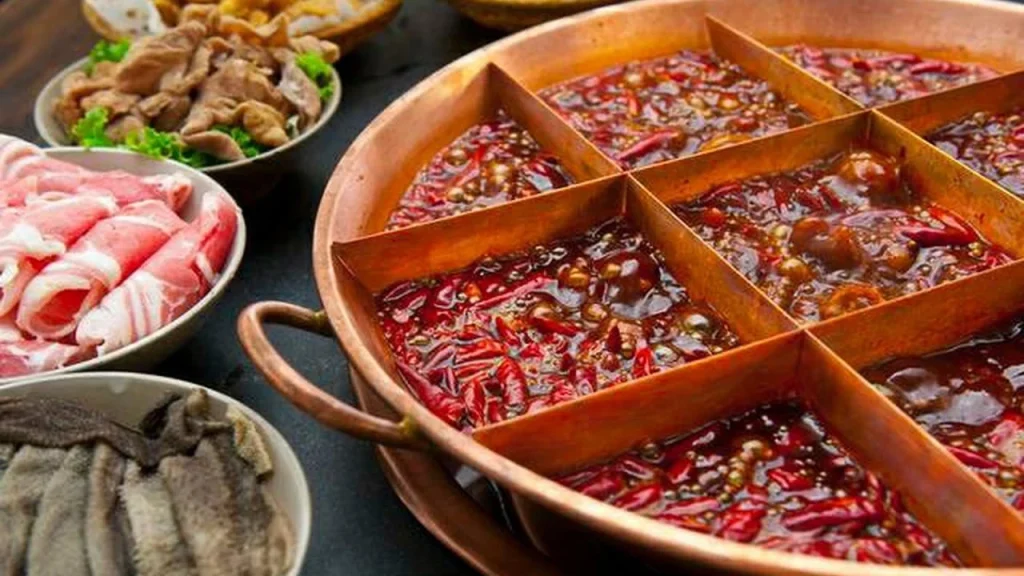
What to Eat:
Hotpot: Try Zhu Jiangyuan in Yuzhong for a 24-flavor broth selection.
Xiaomian: Fatty’s Noodles in Jiefangbei serves “dry-mixed” noodles with peanut sauce.
Street Food: Aci’er (sour and spicy noodles) from Liangxin Old Street.
When to Go:
March–May and September–November for mild weather.
December–February for hot springs and snow-dusted peaks.
Safety Tips:
Wear sturdy shoes – Chongqing’s hills are no joke.
Carry tissues (public restrooms rarely provide toilet paper).
Learn basic Chinese phrases – English signage is scarce outside tourist zones.
Epilogue: Chongqing – A City That Defies Gravity
Chongqing isn’t just a destination; it’s a state of mind. Here, the past and future collide in a fiery embrace, where every staircase leads to a surprise, and every meal feels like a dare. Whether you’re navigating its labyrinthine streets, marveling at its geological wonders, or sweating through a bowl of numbingly spicy hotpot, Chongqing will etch itself into your memory like the calligraphy on a teahouse wall – permanent, poetic, and utterly unforgettable.
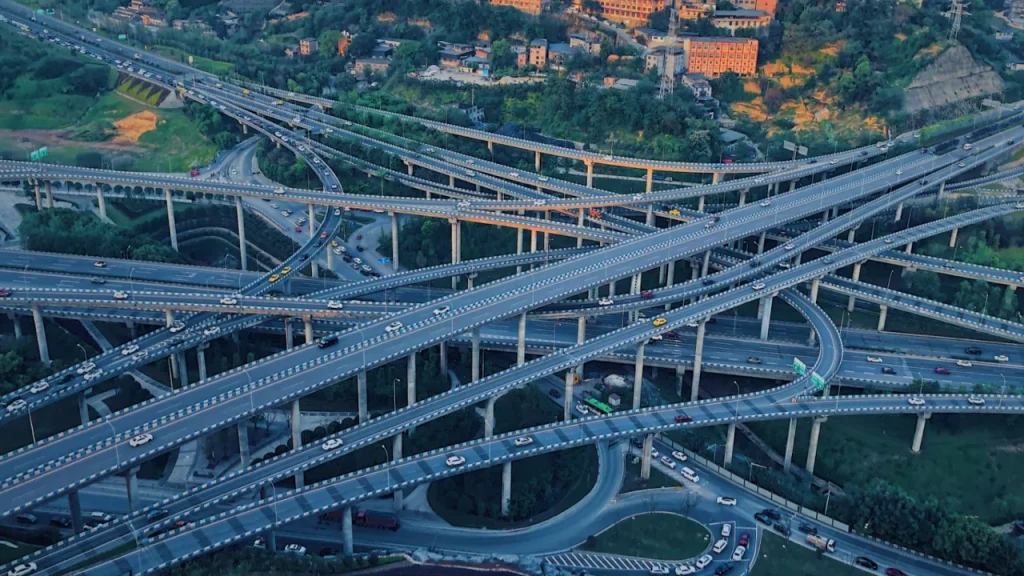
So pack your sense of adventure, leave your GPS at home, and surrender to the magic of a city that doesn’t just exist – it defies. Chongqing awaits, ready to redefine your understanding of urban wonder.

Leave a Reply